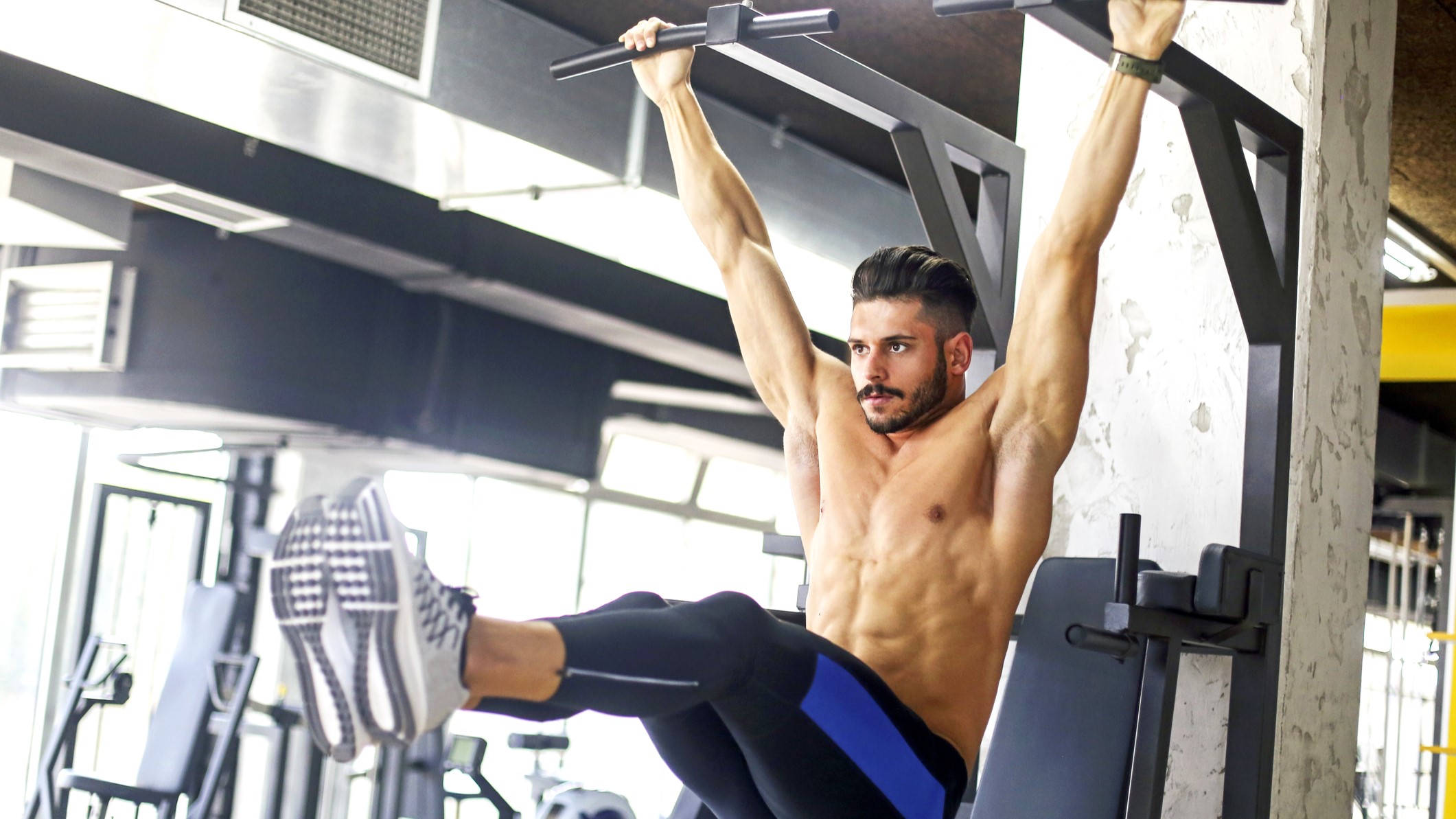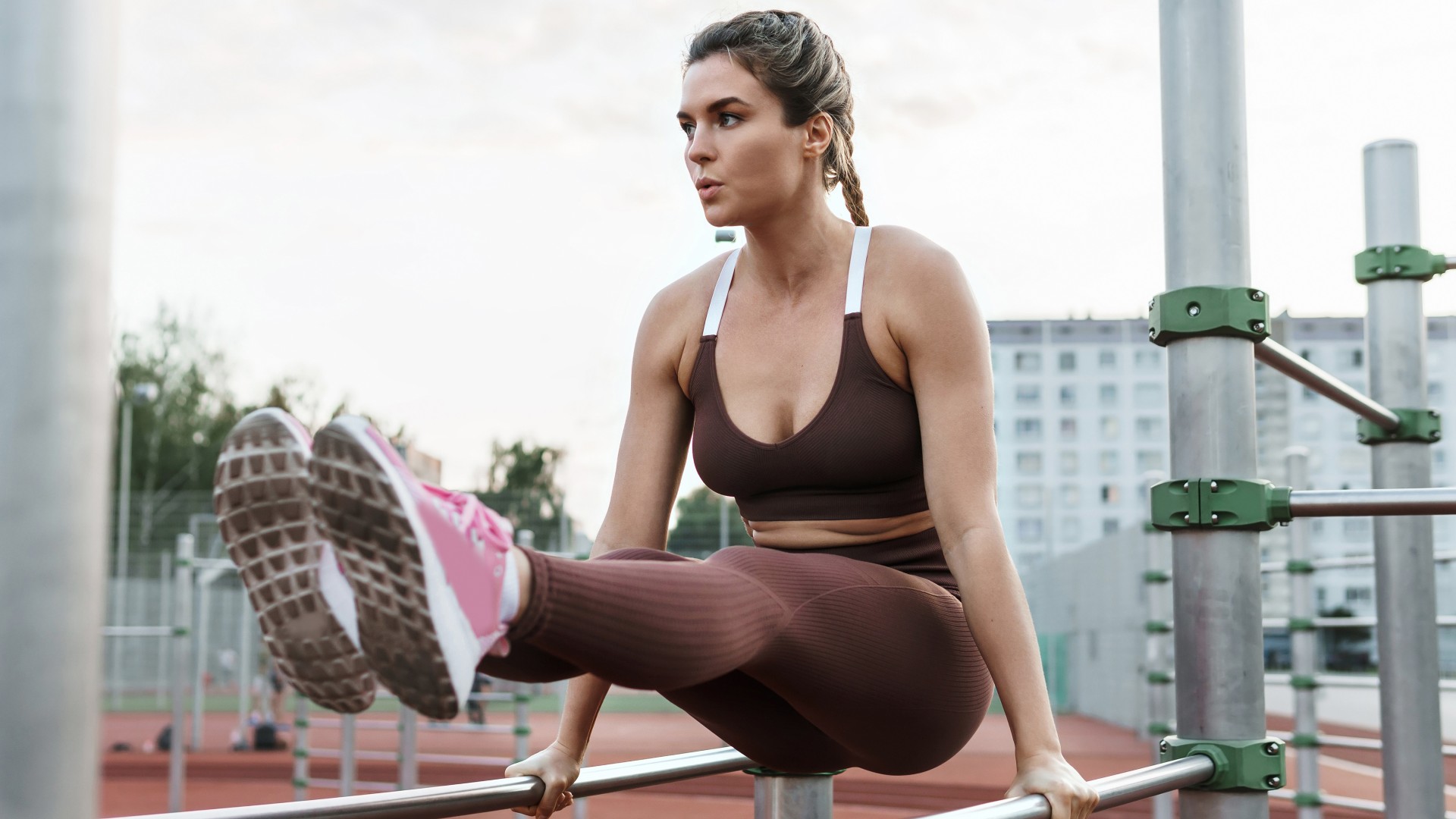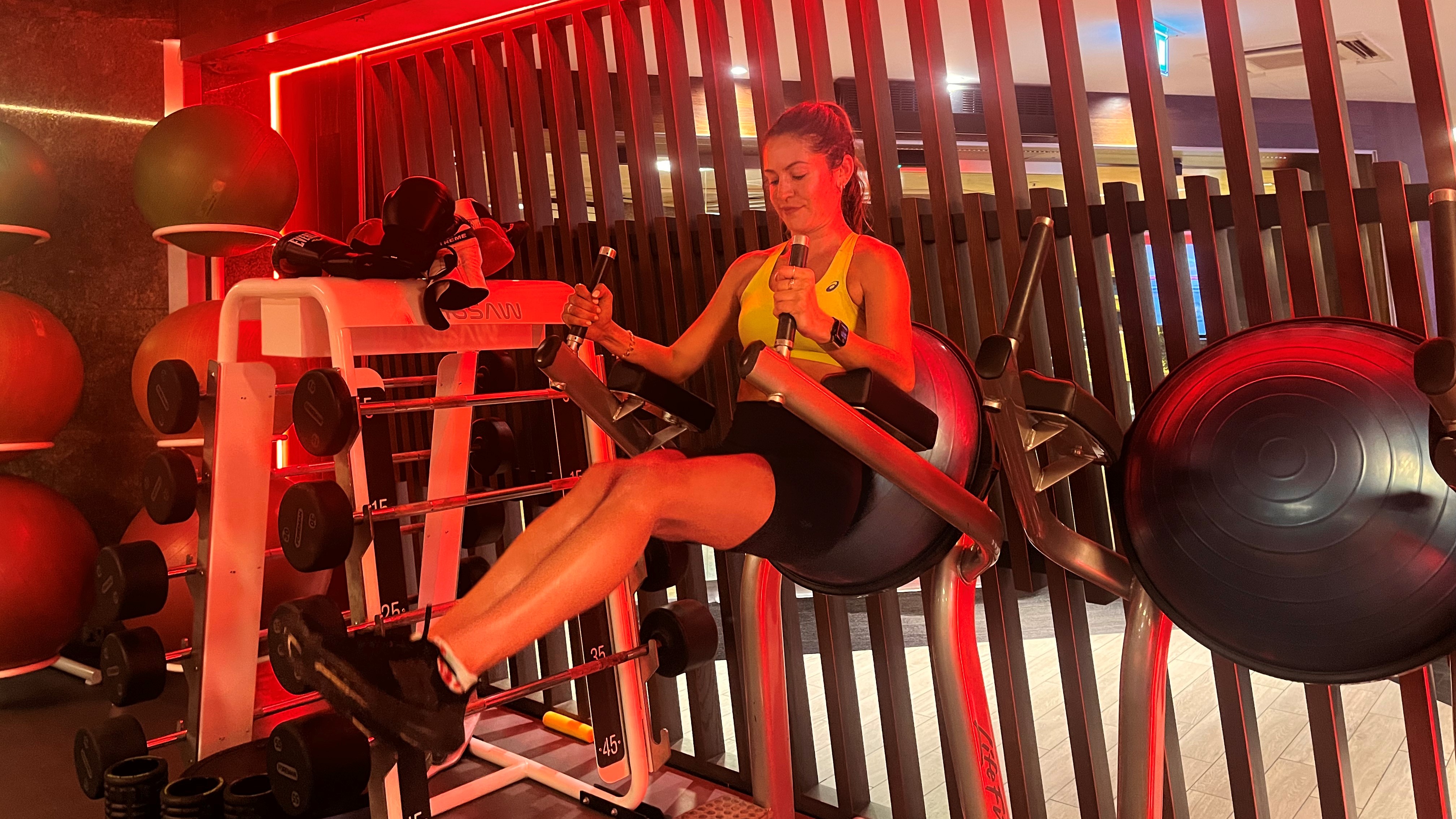
The hanging L-sit is one bodyweight exercise you should add to your workout routine if you’d like to strengthen your abs, obliques and hips while boosting posterior chain flexibility.
You just need a pull-up bar or similar to do the hanging L-sit. Hang from the bar with your hands shoulder-width apart, then lift your legs, extend them at hip height and hold the position. Your body should form an L-shape, which might seem simple, but you'll quickly feel the familiar trembling as your core and hips activate.
Here are some benefits of the full-body exercise, how to do it and ways to scale.
How to do the hanging L-sit exercise

Here’s how to do L-sit hold step-by-step from the hanging position:
- Position your hands roughly shoulder width apart using an overhand grip on the bar, then fully wrap your thumbs and hang from the bar
- Engage your shoulders, glutes and core muscles, then raise your legs and extend them away at hip height, creating an L-shape
- Flex your feet or point your toes and hold the position
- Stay long through your spine without hunching and keep tension through your torso.
What are the benefits of the hanging L-sit?
If you’re unfamiliar with how the L-sit should look or feel, practice the exercise on the floor. Although harder for many people because you start close to the ground, it will help you work on core activation and posture. Plus, it’s good practice.
Press your hands into the floor and lift your bum as you extend your legs into the air, or elevate your hands on two raised surfaces like weight plates or tricep bars and focus on tensing your abs as you raise your legs.

Pull-up bars are low impact, increase upper body engagement and help protect the spine during an L-sit exercise. Hanging from the bar also stretches your arms, shoulders and back — especially the lats — and builds forearm and grip strength.
Although L-sits are seen as a bodyweight core exercise, many muscles are at work, making it a true compound exercise for building strength all over.
Your shoulders, arms, pecs, and back are active and help stabilize and strengthen the upper body, plus the posterior chain muscles — the lower back, glutes and hamstrings — and the quads and hip flexor muscles. The hip flexors work hard to keep your legs raised and holding the position takes a whack of core strength.
The isometric exercise (a static position) holds muscles under tension without lengthening or shortening, meaning it can build flexibility but also requires it to maintain posture. Think of this as a symbiotic relationship.
Hanging L-sit hold: More variations to try
The exercise can be found in gymnastics and calisthenics programs and builds functional strength, flexibility and endurance. The L-sit also improves core and hip stability, balance and control.
If you’re not quite there yet, don’t worry, there are plenty of ways to scale.

Captain’s Chair
The captain’s chair machine in the gym has armrests and a back, allowing you to rest your arms and back against it for extra support as you focus on lifting your legs. I recommend practicing on the machine, slowly raising your legs without swinging them, holding the position, then lowering them with full control.
Single-leg L-sits
Practice lifting one leg at a time and holding, then switch. Start with just a few seconds and focus on getting the leg to hip height without leaning forward or backward or swinging the leg. Once you’ve got some foundational hip strength, build until you can hold each leg for the same amount of time.
Knee tucks
When upper body strength is the main problem and hanging from the bar feels too difficult, try from the floor (as mentioned above) or practice tucking your knees toward your chest and hanging from the bar. Keep your legs pressed together and stay tall through your spine.
Once this feels more comfortable, you can practice extending one leg at a time.
Whichever scaling option you choose, practice holding for 5-10 seconds and build into longer efforts. Only move to the next variation when you’re ready.

L-sit pull-ups
If you can perform pull-ups and the L-sit comfortably, try combining them into an L-sit pull-up. Extend your legs, pull yourself up to the bar until your chin reaches over it and control the motion as you lower back into the hang position.
Change equipment
Try moving to gymnastics rings, which are less stable than the pull-up bar and require greater muscular effort, control and stability to keep the rings in position.
My verdict on the hanging L-sit exercise
People tend to fit into one of two camps (or sometimes both) when trying hanging L-sits for the first time: lack of flexibility or relative strength.
If you have tight hips and hamstrings, you’ll need to work on strengthening and mobilizing these muscle groups while building up using the scaling options above. Stretches for tight and weak hips and hamstring exercises can be helpful but aren’t a quick fix.
An easy way to tell if your hips are the problem is if you overlean to maintain the hold or have trouble lifting your legs. If leg extension is the issue, your hamstrings could be the issue.
Those with tight or weak back, arm, or shoulder muscles might notice hunching and leaning or could need to drop from the bar sooner than the legs tire.
In that case, focus on building upper body strength in the gym. Hanging from the bar can also help stretch the relevant muscles, increase grip strength and improve endurance on the bar. Again, a consistent mobility routine can help relieve tightness and tension, but it’s not a quick fix.
Whether you have limited lower body flexibility or struggle with your upper body strength, someone can rarely jump straight into a hanging L-sit for any length of time. Developing your skillset and honing your technique is the best way to approach this full-body exercise, and you’ll need to practice it along with your other workouts.
Personally, I like to add it as a finisher and perform a few max holds at the end of my workouts for several sets.




!["[T]he First and Fifth Amendments Require ICE to Provide Information About the Whereabouts of a Detained Person"](https://images.inkl.com/s3/publisher/cover/212/reason-cover.png?w=600)


